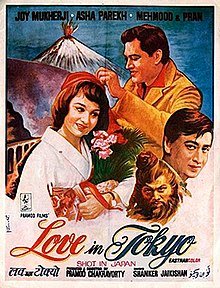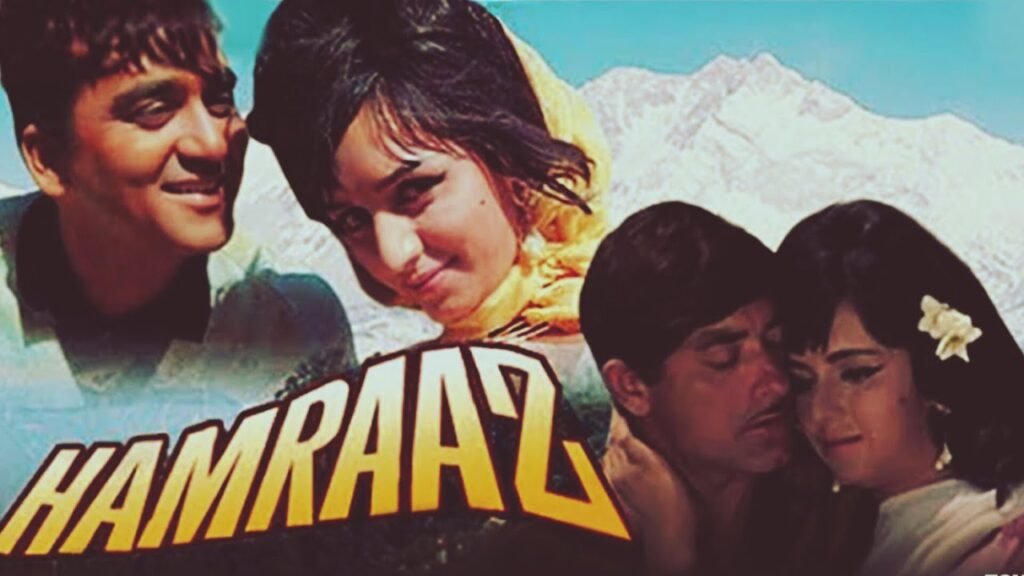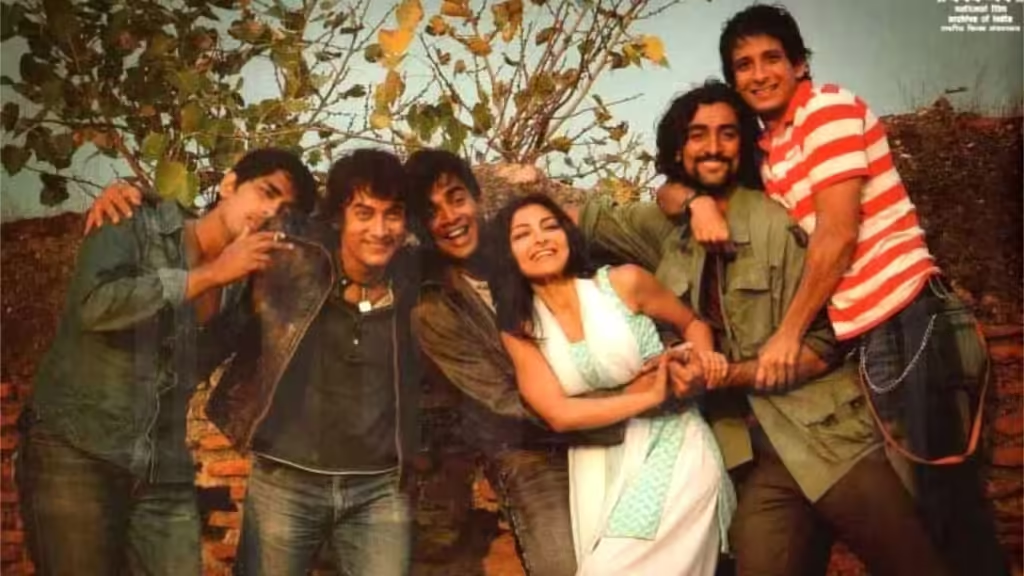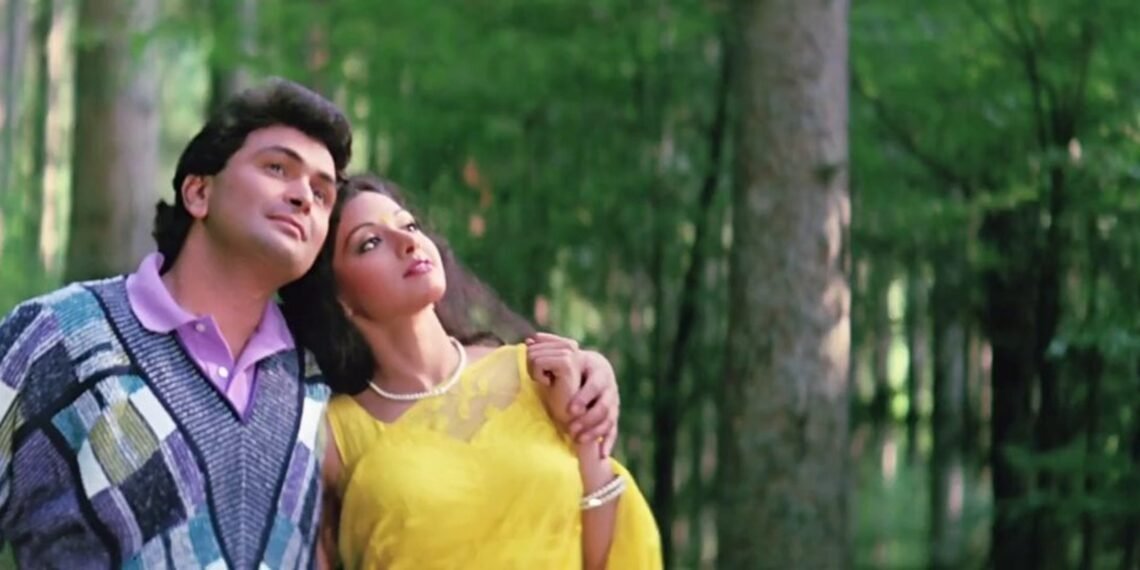First published in The Federal
Do you remember Yashraj Chopra’s love affair with Switzerland? Or, go further back and think of Love in Tokyo and An Evening in Paris. Remember how Amitabh Bachchan and Moushumi Chatterjee made us dream of Bombay’s rains in the 1979 film, Manzil?
These films made crores of Indians dream about the world outside, about pretty lands far and near, and make journeys similar to those of their favorite film stars someday.
I vividly remember falling for Paris and its evenings as I watched Shammi Kapoor and Sharmila Tagore stroll the city in An Evening in Paris. This love affair for places on the silver screen only grew stronger as I watched Junglee (Kashmir), Silsila (the Netherlands), Love in Tokyo (Japan), Hamraaz (Darjeeling), Sangam (Venice, Paris, Switzerland!).

Imagine the fervour even as the TV sets at homes and the neighbourhood stayed a robust black & white for decades to come. It did not matter that the tulips in Silsila looked shades of black and white, as long as they swayed romantically and evoked a sense of the exotic.
Bollywood gave us, the masses, a collective dream; a dream of beautiful, distant lands that looked stunning, clean, and without the tribulations of a country like ours back then—newly-free and nascent.
The era of Great Outdoors
The feeling of a free India was relatively new in the 60s – 80s, and the same reflected on the cinema screens as well. The marks of British rule were still fresh, when it was common to experience gatekeeping for the natives at a number of places.
Indian films that came fresh in the wake of India’s independence moved fast and swiftly to places such as Shimla, Mussoorie as well as the very-alluring Europe of those times.
It is hard to believe that during the British rule, Shimla’s famous Ridge was open only to the rule’s highest officers, followed by the other officers and less wealthy on the Lower Ridge, restricting the movement of native Indians to the Lower Bazaar that mostly reeked of filth and sewage flowing down from the hills.
Mussoorie has its own history and the British barred entry of Indians on the Mall and other prominent places. The rule was famously broken by Mr Motilal Nehru, an incident that was widely celebrated across the country. There are similar stories and anecdotes from more places—Darjeeling, parts of Kolkata, Delhi and Mumbai as well. Some places had signboards that read—“Indians and dogs not allowed.”

Of course, Bollywood films that were shot here felt like reclaiming what was India’s own. Films such as Madhumati (1958), Anita (1967), Hamraaz (1967) and more took us to places we were denied access to. And then, Sangam (1964) took us straight to London, Paris and Switzerland, paving the way for more such visual journeys.
This was also the time when my family lived in the DD1 era, yet the children were religiously taken to the cinema halls. The four of us would wait for a Subhash Ghai or Yash Chopra release since we wanted to travel, armchair of course.
How did the narrative move indoors then?
The dreams of 1990s
The era of the 90s was the era of the Great American Dream for the cinema-goers. This is when the middle-class and the rich aspired to move from their Maruti 800 to Opel Astra, and from Contessa to Mitsubishi Lancer, Tata Safari and Honda Accord. From a Tier-2 city or their country houses to small yet aspirational little apartments in the capital or a city like it.
It was the time to dream and so the Hindi film industry did dream too. McDonald’s, Coke and Pepsi became the cool things, and so did the DKNY and Polo-flaunting SRK in Kuch Kuch Hota Hai (1998). This is also the time when the man-made opulence of mansions and landscaped gardens began to take over the outdoors. It was around the year 2000 that the film production units also started moving indoors.
The realism of 2000s and ahead

When we flip over the chapters of what shaped the Hindi film industry from 2000 onwards, it points towards a homecoming of sorts. While the Great American Dream remains in the hearts of many even now, there were realities that the society faced as times changed.
This is when Swades’ Mohan Bhargava subtly pined to come back to his roots in India; there was ever-mounting corruption that Gangaajal (2003) had to hit at; country’s youth hit a growth spurt in Dil Chahta Hai (2001); the middle-class fought off swindlers in Khosla ka Ghosla (2006); corrupt politicians had to be slapped across their face in Rang De Basanti (2006).
Of course, the audience could still see slivers of landscapes and outdoors on the big screen, yet nothing as lavish and dreamy as the rolling meadows of DDLJ or the golden deserts of Lamhe.
Even the famous dance sequences that the industry is famous for moved to pubs, discotheques, swanky mansions and palatial private residences. Unarguably, we cannot pit these against the joy of seeing Raaj Kumar and Vimi (Hamraaz) in the Darjeeling Himalayas or Sri Devi making us gape for the Swiss valleys (Chandni).
Sporadically, there were sudden bursts of places and possibilities in the works of Imtiaz Ali (Socha na Tha, Jab We Met, Love Aaj Kal, Rockstar etc), Zoya Akhtar (Zindagi Na Milegi Dobara, 2011), Shoojit Sircar (Piku, 2015) and a few others.
A couple of films like these had to move outdoors since these are essentially travel movies. Apart from these few instances, we are now in a certain void that lacks the charms of unforgettable scenery and picture-postcard like moments.
Yet, the era of the great outdoors had ended by now.
It was time for the two polarising worlds that India lives in to be shown on-screen—the sordid reality of Anurag Kashyap’s Gangs of Wasseypur and the glimmering opulence of Sanjay Leela Bhansali’s Ram-Leela.
The outdoors had no chance against the colliding world of Bombay’s Dharavi and Mumbai’s Antilia.
Can we aim for the stars again?
Now, as the industry goes through a storytelling low, it does feel like the right time to pull the magic trick that has hardly failed before—one of Bollywood’s brightest stars—the outdoors. A country of billions will take its time to get hooked to VFX and CGI; the city I currently live in has just one cinema screen, a bad one at that.
We do not pine for badly-made 500 crore movies; we are waiting for well-crafted movies that can probably make us dream again.
We pine for Corsica, Rajasthan and Chamba to come alive on our TV screens like they did in Tamasha, Paheli and Taal. Even a regular potboiler like Ek Tha Tiger gave us some wonderful views of Dublin, Istanbul and Havana, that is right at the top of my current wishlist.











![They say it’s going to be a harsh summer.
We say it’s going to be a chilly vacation!
Our favourite pick of South India’s most offbeat hill stations.
[summer, travel, India] They say it’s going to be a harsh summer.
We say it’s going to be a chilly vacation!
Our favourite pick of South India’s most offbeat hill stations.
[summer, travel, India]](https://scontent-bom5-1.cdninstagram.com/v/t51.75761-15/491447958_17906810376140553_82115311286037935_n.jpg?stp=dst-jpg_e35_tt6&_nc_cat=111&ccb=7-5&_nc_sid=18de74&efg=eyJlZmdfdGFnIjoiQ0FST1VTRUxfSVRFTS5iZXN0X2ltYWdlX3VybGdlbi5DMyJ9&_nc_ohc=nfxa92E1r5oQ7kNvwEhcgLm&_nc_oc=AdmEoCq68fndhWIpkfPllDrxNPTGJYMrRFTGu8Q9BSa6wjMfSiB5zIoYb58qBR4FenaXIqM-LS7ZwwzXYuvqpQWH&_nc_zt=23&_nc_ht=scontent-bom5-1.cdninstagram.com&edm=ANo9K5cEAAAA&_nc_gid=20xdExlGMm2Kv-_Flg2zaw&oh=00_Afh2gJ2m3T2Q_kBee9G8Ruix9Zc32aAmZSoJwXmhHFOUJw&oe=69313C77)
